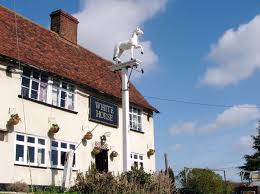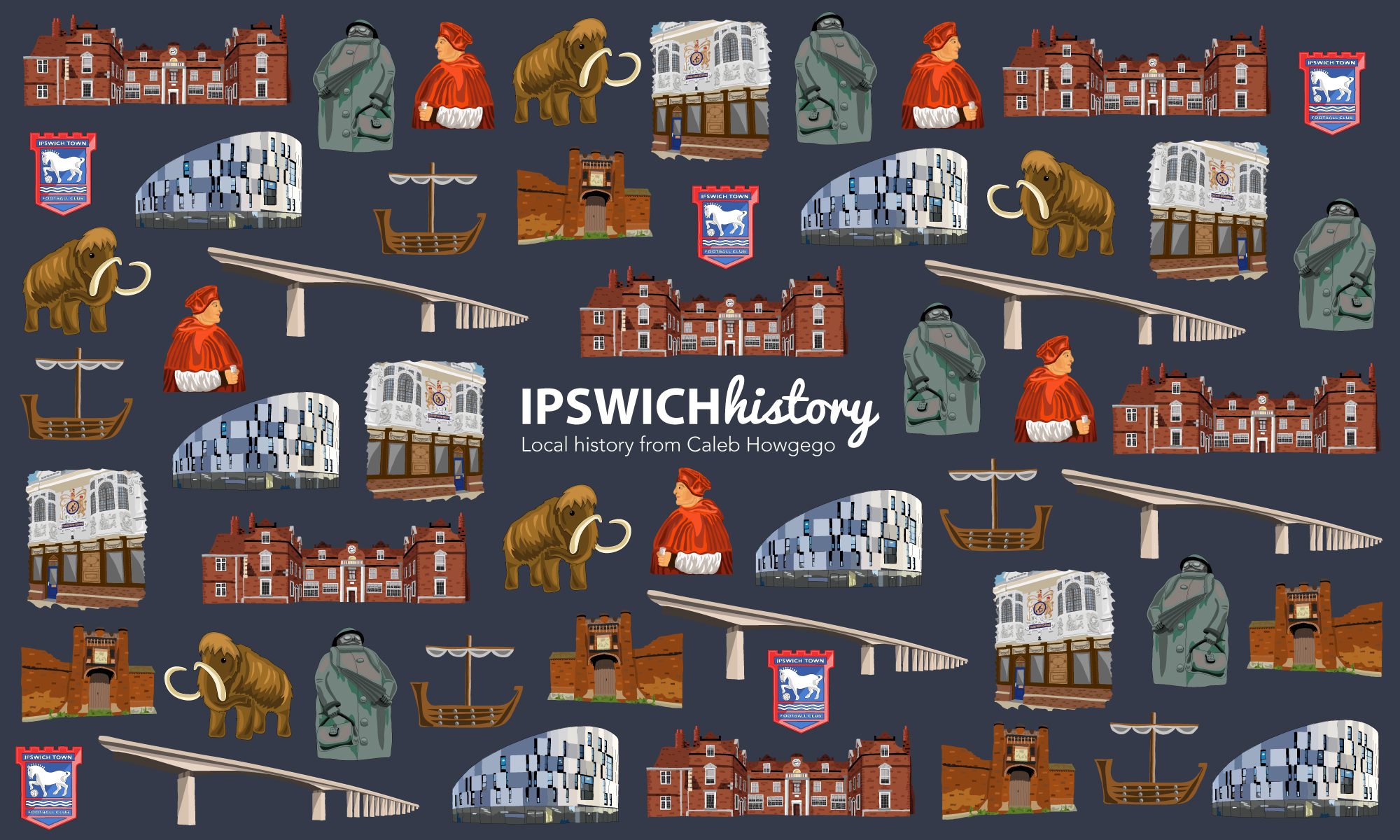The history of Ipswich architecture is littered with the rubble of demolished, once great, buildings. If you read a lot of local history books (which, sad person that I am, I do), you’ll see that ancient and impressive buildings in the town have time and again been casually demolished in the name of each century’s idea of modernisation. On this occasion, however, I thought it would be interesting to explore a less common example of an important building in the town that, after a close shave, managed to survive the developers wrecking ball, and the heritage that survives as a result.

In 1967, Trust House Forte, then the largest hotel group in the country, applied for permission to demolish The Great White Horse Hotel on Tavern Street, in order to build new shops and offices in its place. Fortunately, the Ipswich Society and the town’s planners managed to persuade a public enquiry, which had been called to decide the building’s fate, that the hotel should be saved. The defenders of the White Horse cited the architectural quality of the building, as well as its status as an ancient feature of the town centre and its connections to the literary work of Charles Dickens (as a prominent and comic setting for part of his debut novel The Pickwick Papers). In fact, thanks to Charles Dickens, there was perhaps an even more remarkable reason why we should be grateful that the Great White Horse was saved, as we shall see.

The White Horse has stood in its current location since at least 1518 and in medieval times there was a building on the same spot referred to simply as ‘the Tavern’. It would have then been one of the inns used by pilgrims when visiting the nearby shrine of Our Lady of Grace (then one of the most important shrines in the country). Between 1815 and 1818, due to the widening of Tavern Street, The Great White Horse lost its original timber-framed front, which was replaced with the current frontage of Suffolk white bricks. This is also when the well-known sculpture of a ‘rampaging’ white horse that Dickens mentions in Pickwick Papers was first introduced. However, Dickens never saw the present-day statue that adorns the building as the original was later moved to the White Horse in Tattingstone (see picture) and replaced by the current statue.
Clearly, Dickens is by far the most mentioned guest when it comes to the Great White Horse, but there have been other notable patrons over the centuries. George II stayed at the Great White Horse in 1736, it was also here that he received expressions of loyalty from the bailiffs and members of the town’s corporation. Another guest was Admiral Nelson, who retired to the hotel upon discovering that his wife Lady Nelson, who lived in Ipswich, had locked and shuttered up their house Roundwood because she had gone to London to prepare a welcome for her husband there.
As well as individuals, the Great White Horse also accommodated organisations. For some time in the 1800s the hotel was used as the headquarters of the Conservative Party for elections. It also played host to the meetings of a peculiar group of young men called the Rump Ups around 1830. If the members of this group didn’t like a speaker, or he was going on too long, they would ‘throw themselves on the ground and moan loudly while lying on the floor, propped up on their knees and elbows’ according to the local historian Susan Gardiner. Eventually, this group evolved into a (slightly) more respectable musical society and changed their name (slightly) from the Rump Ups to the Rum Pups.
Charles Dickens stayed at the Great White Horse on several occasions around the same time as the Rump Ups were using it as their meeting place. In The Pickwick Papers (1836) he described the place thus:
The Great White Horse is famous in the neighbourhood, in the same degree as a prize ox, or a county paper-chronicled turnip, or unwieldy pig – for its enormous size. Never were such labyrinths of uncarpeted passages, such clusters of mouldy, ill-lighted rooms, such huge numbers of small dens for eating or sleeping in, but beneath any one roof as are collected together between the four walls of the Great White Horse at Ipswich
This is a point that Dickens extracts humour from by having Mr. Pickwick get lost on his way back to his room and end up getting into another guest’s four poster bed by mistake, whereupon he is ejected from the room.
Thanks to the popularity of Charles Dickens, the Great White Horse became briefly world famous. In fact, it’s not too much to say that towards the end of the 19th century it was the most famous inn in the country, as it was chosen to be the building that represented Britain in the 1893 World’s Fair held in Chicago. A full-size replica of the building was constructed for the exhibition that visitors were able to enter for refreshment in order to experience what it was like in an archetypal British inn. However, as you can see from the photograph, it’s likely that the builders of the reconstruction had either never seen the Great White Horse in Ipswich or where basing their design on what the hotel would have looked like before its 1815-18 alterations.

And so, we arrive at the point of this story – an example of how fickle history can be at times. Less than 75 years later, a building that was once considered the example of its kind was close to being demolished. The public enquiry that blocked the demolition of the Great White Horse Hotel perhaps dodged a greater bullet than they realised that day.
After various attempts to modernise during the 20th century (including updating its coaching facilities to cater for the use of motor cars), the hotel finally closed its doors to visitors in 2008. The ground floor has recently reopened as a branch of Starbucks and an outdoors shop, which may not be exactly ideal, but is certainly better than the 1967 alternative. The building continues to retain its well-known façade and lettering, and many of its original interior features. At the time of writing, the current owners of the building are planning to convert the upstairs back into accommodation, this time as flats, so perhaps the building will once again fulfil its previous purpose as a place to stay.
*
I’m currently putting together a new book called Ipswich in 50 Buildings, so if you enjoyed this blog post, look out for it (hopefully) in the second half of 2018. The book is understandably taking up a lot of my spare time at the moment, so blog posts will probably continue to be quite sporadic until it’s completed.
